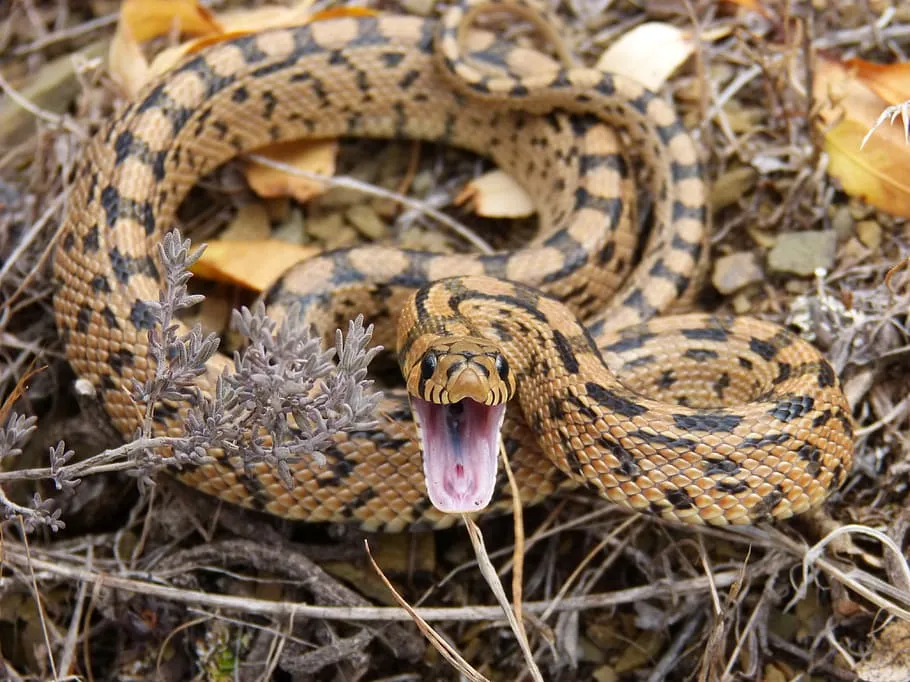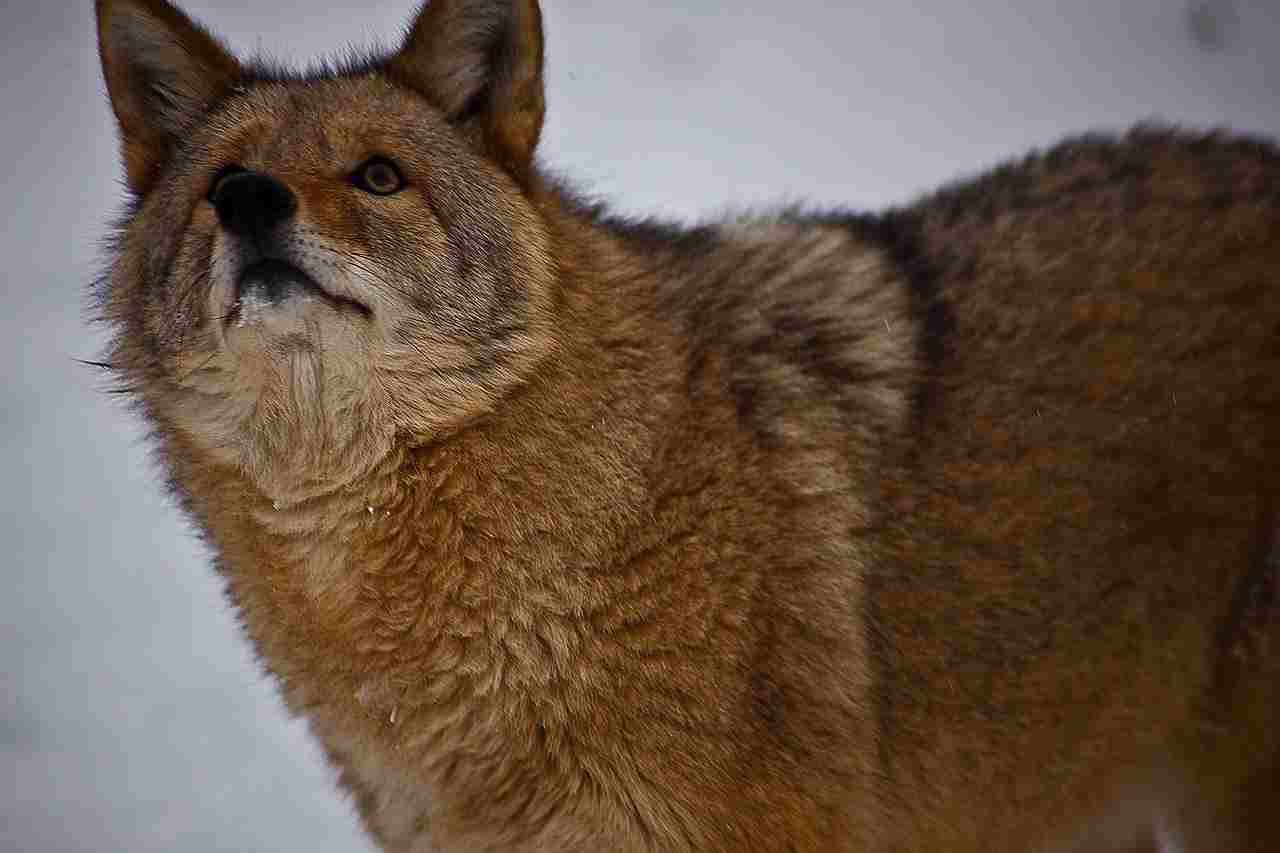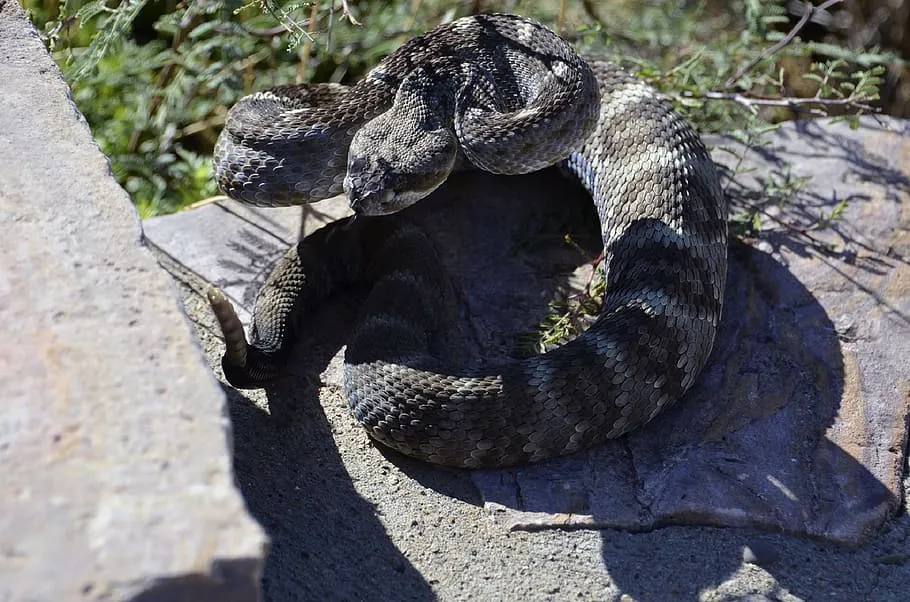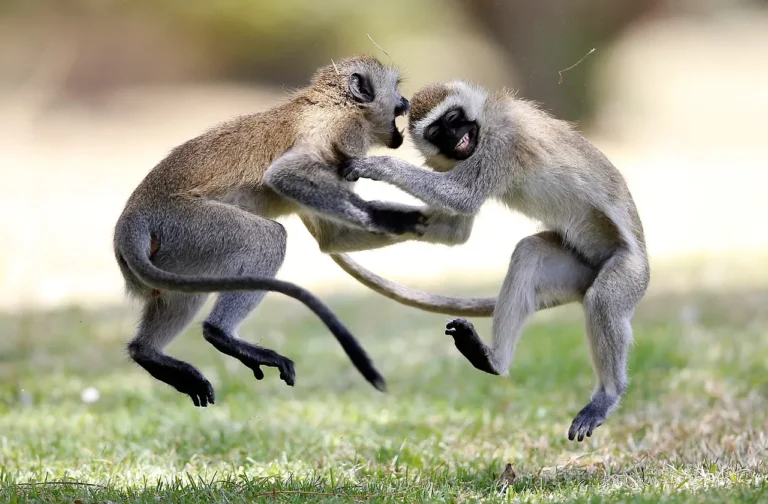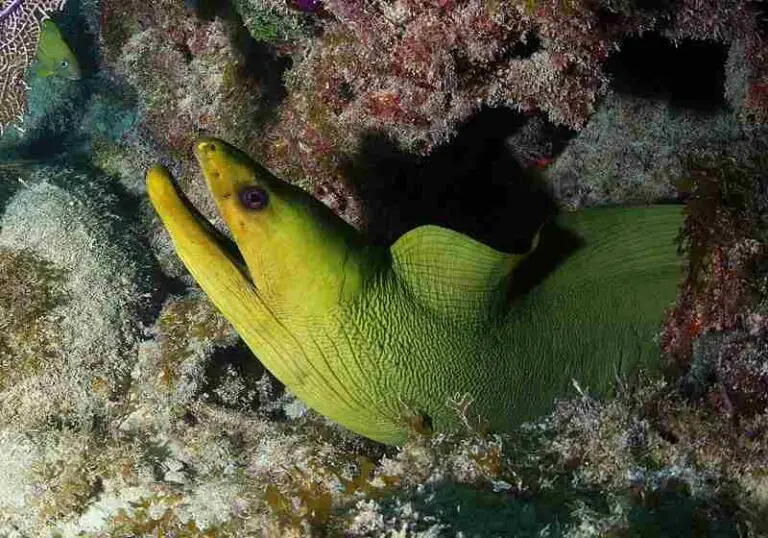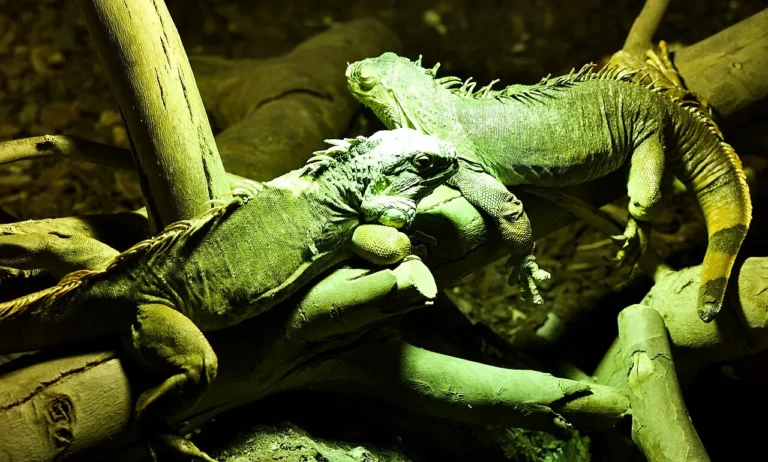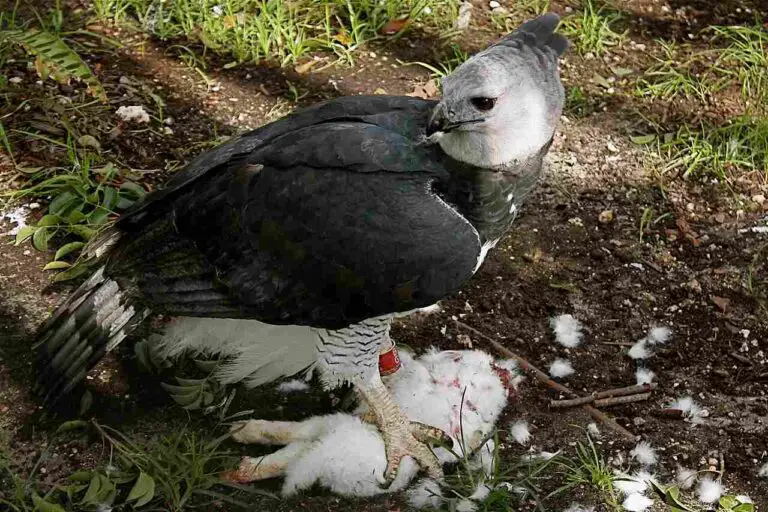25 Dangerous Animals In Florida And Their Characteristics
Examples of dangerous animals in Florida are the American Alligator, known for its powerful jaws; the Eastern Diamondback Rattlesnake, the largest venomous snake in North America; and the Bull Shark, an aggressive shark species capable of entering freshwater. Other dangerous creatures include the Portuguese Man o’ War, with long venomous tentacles, and the Black Widow Spider, a spider with a potent venom. To stay safe, it’s important to respect these animals’ territories and exercise caution in their habitats.
1. American Alligator
The American Alligator (Alligator mississippiensis) is a large, formidable reptile native to the southeastern United States, particularly in Florida’s swamps, rivers, and wetlands. Adult alligators can grow over 11 feet in length and weigh over 1,000 pounds, making them a significant presence in their habitats. Known for their powerful jaws and sharp teeth, these predators can pose a risk to humans, pets, and livestock, especially in areas where development encroaches on their territory. Despite their intimidating presence, alligators play a vital role in their ecosystem, contributing to waterway health and supporting biodiversity. Interactions with humans should be cautious, as alligators can be unpredictable and potentially aggressive, especially during mating season or when protecting their nests. It is crucial to maintain a safe distance and follow local guidelines to avoid conflicts.
2. American Crocodile
The American Crocodile (Crocodylus acutus) is found in coastal areas of southern Florida, including brackish and saltwater habitats such as mangroves and estuaries. Unlike the American Alligator, these crocodiles have a narrower snout and are typically more elusive, preferring to avoid human contact. Despite their shyness, they can grow over 15 feet in length, making them a potentially dangerous presence in their environment. American Crocodiles are a protected species in Florida, and while attacks on humans are rare, they can occur if the crocodiles feel threatened or provoked. As with alligators, it’s crucial to maintain a safe distance and avoid feeding or disturbing these reptiles.
3. Eastern Diamondback Rattlesnake
The Eastern Diamondback Rattlesnake (Crotalus adamanteus) is the largest venomous snake in North America, commonly found in pine forests and palmetto flatwoods throughout Florida. It is known for its distinctive diamond-shaped patterns along its back and a signature rattle on its tail, which it uses as a warning signal when threatened. These snakes can deliver a potent venomous bite, which can cause severe injury or even death if not treated promptly. While generally reclusive, they can be aggressive if cornered. Caution and respect for their space are key to avoiding dangerous encounters.
4. Cottonmouth (Water Moccasin)
The Cottonmouth (Agkistrodon piscivorus), also known as the Water Moccasin, is a venomous snake commonly found in Florida’s wetlands, rivers, and swamps. It gets its name from the white interior of its mouth, which it displays as a warning to potential threats. Cottonmouths are generally not aggressive but can be defensive when approached or provoked. Their venom can cause severe tissue damage and systemic effects, making them a serious concern for those who venture into their habitats. Keeping a safe distance and being aware of one’s surroundings near water are key to avoiding bites.
5. Coral Snake
The Coral Snake (Micrurus fulvius) is one of the most venomous snakes in Florida, known for its bright red, yellow, and black bands. Unlike many other snakes, coral snakes have a neurotoxic venom that can cause paralysis and respiratory failure. Fortunately, they are reclusive and generally avoid humans, preferring to hide in leaf litter or dense vegetation. The mnemonic “red touches yellow, kills a fellow” helps distinguish this dangerous snake from non-venomous lookalikes. Despite their shy nature, any encounter with a coral snake should be treated with extreme caution, and medical attention should be sought immediately if bitten.
6. Copperhead
The Copperhead (Agkistrodon contortrix) is a venomous snake found in northern Florida, recognizable by its copper-colored head and hourglass-patterned body. Although less venomous than some other snakes, copperhead bites can cause intense pain and swelling. These snakes are often found in wooded areas and near water sources, where they hunt small mammals and insects. Copperheads are generally not aggressive, but they can strike if startled or provoked. It’s important to watch where you step and be cautious when walking through dense vegetation or rocky areas to avoid a surprise encounter.
7. Bull Shark
The Bull Shark (Carcharhinus leucas) is a large, aggressive shark species known for its ability to tolerate freshwater, making it a potential threat in Florida’s rivers and estuaries. These sharks can grow over 11 feet in length and are responsible for a significant number of shark attacks worldwide. Their aggressive nature and ability to venture into freshwater habitats increase the risk of human encounters. Swimmers and water sports enthusiasts should be cautious, especially in murky waters or areas where sharks are known to frequent. It’s essential to follow local safety guidelines and avoid swimming in isolated areas to minimize the risk of a shark attack.
8. Tiger Shark
The Tiger Shark (Galeocerdo cuvier) is a large predatory shark found in the warm coastal waters of Florida. Recognized by its tiger-like stripes and robust build, the tiger shark is among the most aggressive and dangerous sharks. It is responsible for a significant proportion of shark attacks on humans. These sharks can grow up to 18 feet long and have powerful jaws capable of crushing shells and bones. While attacks on humans are rare, they can occur, particularly in deeper waters or around shipwrecks, where tiger sharks often hunt. Swimmers and divers should exercise caution and be aware of their surroundings when venturing into known tiger shark habitats.
9. Hammerhead Shark
The Hammerhead Shark (Sphyrna spp.) is easily recognizable by its distinctive head shape, resembling a hammer. Several species of hammerhead sharks inhabit Florida’s coastal waters, ranging in size from medium to large. Although generally less aggressive than other shark species, hammerheads can pose a risk to humans, especially during their migrations or when they gather in large groups. These sharks are often found near reefs and inlets, where they hunt for fish and squid. To reduce the risk of shark encounters, swimmers and divers should avoid areas where hammerheads are known to congregate and always follow local safety advisories.
10. Great White Shark
The Great White Shark (Carcharodon carcharias) is one of the most feared and well-known shark species, renowned for its size, power, and predatory instincts. Although less common in Florida than other coastal regions, these apex predators have been spotted in the state’s waters, particularly during migration periods. Great whites can grow over 20 feet long and weigh several tons, with a diet that includes seals, sea lions, and other marine mammals. While attacks on humans are rare, they are responsible for a significant number of fatal shark attacks worldwide. Swimmers and surfers should remain vigilant, especially in deeper waters, and adhere to local safety guidelines to minimize the risk of an encounter with a great white shark.
11. Stingray
Stingrays are cartilaginous fish found in Florida’s coastal waters, often near sandy beaches and shallow flats. They are generally not aggressive but can pose a risk to humans due to the venomous barb located on their tails. When stepped on or threatened, stingrays can lash out with their tail, causing painful injuries and, in some cases, severe complications. To avoid stingray injuries, beachgoers should shuffle their feet when wading through shallow water to give the stingrays a chance to move away. If stung, prompt medical attention is required to treat the venom and prevent infection.
12. Portuguese Man o’ War
The Portuguese Man o’ War (Physalia physalis) is a marine organism often mistaken for a jellyfish, though it is technically a siphonophore, a colony of specialized polyps. Found in Florida’s coastal waters, the Man o’ War has long, venomous tentacles that can stretch several feet, delivering painful stings to swimmers and beachgoers. These stings can cause severe pain, welts, and in some cases, respiratory distress or allergic reactions. Beach warnings are often issued when Man o’ Wars are present, and it’s essential to heed these warnings to avoid contact. If stung, medical treatment should be sought immediately to manage pain and other potential complications.
13. Black Widow Spider
The Black Widow Spider (Latrodectus mactans) is a venomous spider commonly found in Florida, often in dark, sheltered places such as woodpiles, sheds, or crawl spaces. Characterized by its shiny black body and distinctive red hourglass marking on its abdomen, the black widow is feared for its potent neurotoxic venom. Although bites are rare, they can cause severe pain, muscle cramps, and other systemic effects. Fatalities are uncommon due to advancements in medical treatment, but it’s crucial to exercise caution when reaching into dark or hidden areas. If bitten, immediate medical attention is necessary to manage symptoms and prevent complications.
14. Brown Recluse Spider
The Brown Recluse Spider (Loxosceles reclusa) is another venomous spider occasionally found in Florida, known for its violin-shaped marking on its back. It prefers dark, undisturbed places such as closets, attics, or under furniture, where it can hide during the day. The brown recluse’s venom can cause necrotic lesions and, in rare cases, severe systemic reactions. Bites are uncommon but can be dangerous, leading to tissue damage and prolonged healing times. To reduce the risk of brown recluse encounters, keep storage areas clean and organized, and avoid reaching into unseen spaces without proper precautions. If bitten, seek medical attention promptly to prevent further complications.
15. Wild Boar
Wild Boars (Sus scrofa) are invasive, aggressive animals found throughout Florida’s forests and wetlands. Known for their powerful tusks and muscular build, wild boars can be highly destructive to vegetation and crops. They can also be aggressive toward humans and pets, particularly when protecting their young or during the breeding season. Wild boars are capable of causing significant injuries with their tusks and brute strength. It’s crucial to avoid approaching or cornering these animals and to exercise caution when hiking or camping in areas where wild boars are known to roam. If you encounter a wild boar, maintain a safe distance and slowly back away to avoid provoking an attack.
16. Florida Panther
The Florida Panther (Puma concolor coryi) is a critically endangered subspecies of cougar found in the swamps and forests of southern Florida. As apex predators, Florida Panthers are large and powerful, with males weighing up to 160 pounds. Although they primarily prey on deer and other wildlife, these cats can pose a risk to humans and pets if they feel threatened or their natural food sources are scarce. Panther encounters are rare, but it’s important to exercise caution in areas where they are known to roam. If you spot a panther, do not approach, make yourself appear larger, and back away slowly without turning your back on the animal.
17. Bobcat

The Bobcat (Lynx rufus) is a medium-sized wildcat found throughout Florida, known for its tufted ears and distinctive short tail. While generally shy and reclusive, bobcats can become aggressive if cornered or if they feel threatened. They primarily hunt small mammals and birds but can also pose a risk to pets and livestock. Bobcat attacks on humans are rare, but it’s essential to exercise caution in areas where they are known to be active. If you encounter a bobcat, do not approach or run; instead, make noise and appear larger to encourage the animal to leave the area.
18. Fire Ant
Fire Ants (Solenopsis invicta) are invasive insects found throughout Florida, known for their aggressive behavior and painful stings. These ants build large mounds in open areas and will attack en masse if their mound is disturbed. Fire ant stings can cause intense pain, swelling, and in some cases, severe allergic reactions, leading to anaphylaxis. Fire ants are a significant threat in Florida, often infesting lawns, parks, and gardens. To avoid fire ant stings, it’s important to identify and avoid their mounds and take precautions when working in infested areas. If stung, proper treatment and, if necessary, medical attention should be sought to manage pain and potential allergic reactions.
19. Coyote
The Coyote (Canis latrans) is a highly adaptable predator found throughout Florida, capable of living in a wide range of habitats, from rural areas to urban neighborhoods. Coyotes typically hunt small mammals, birds, and insects, but they can also pose a risk to pets and livestock. Although coyotes are generally wary of humans, they can become aggressive if food sources are scarce or if they feel threatened. To reduce the risk of coyote encounters, avoid leaving pet food or garbage outdoors, and keep small pets on a leash when walking in areas where coyotes are known to roam. If you encounter a coyote, make loud noises and make yourself appear larger to scare it away.
20. Red-tailed Hawk
The Red-tailed Hawk (Buteo jamaicensis) is a large bird of prey commonly found throughout Florida. With its distinctive red tail and powerful talons, the red-tailed hawk is an impressive predator, hunting small mammals, birds, and reptiles. While they generally avoid humans, these hawks can become aggressive if they feel threatened or if their nesting sites are disturbed. Red-tailed hawk attacks on humans are rare, but they can occur during nesting season when the birds are protecting their young. To avoid conflicts with red-tailed hawks, maintain a safe distance from known nesting sites and be cautious when walking in areas where hawks are active. If attacked, seek shelter and protect your head and face.
21. Raccoon (rabies risk)
Raccoons (Procyon lotor) are common mammals in Florida, known for their distinctive masks and bushy tails. While generally harmless, raccoons can carry rabies, a deadly viral disease transmitted through bites or scratches. Infected raccoons may display unusual behavior, such as aggression, disorientation, or lack of fear of humans. To reduce the risk of rabies transmission, avoid approaching or feeding raccoons and ensure pets are vaccinated against rabies. If bitten or scratched by a raccoon, seek immediate medical attention and report the incident to local health authorities to receive appropriate treatment and rabies prophylaxis.
22. Eastern Indigo Snake
The Eastern Indigo Snake (Drymarchon couperi) is a non-venomous snake found in Florida, recognized for its iridescent blue-black coloration and large size, reaching over 8 feet in length. Although non-venomous, Eastern Indigo Snakes can be intimidating due to their size and speed. They play a crucial role in controlling rodent populations and are generally non-aggressive toward humans. However, they can bite if handled or provoked. To avoid encounters with Eastern Indigo Snakes, it’s best to maintain a safe distance and allow them to continue their role in the ecosystem. If bitten, even by a non-venomous snake, it’s important to clean and disinfect the wound to prevent infection.
23. Florida Black Bear
The Florida Black Bear (Ursus americanus floridanus) is a subspecies of black bear found in the forests and swamps of Florida. As the state’s largest terrestrial mammal, these bears can weigh over 300 pounds and are capable of climbing trees and running at high speeds. Although generally shy and reclusive, Florida Black Bears can become aggressive if they feel threatened or if they are protecting their cubs. To reduce the risk of bear encounters, store food and garbage securely, and avoid surprising bears in their natural habitat. If you encounter a bear, do not run; instead, back away slowly and make noise to alert the bear to your presence. If a bear attacks, fight back with all available means.
24. Electric Ray
The Electric Ray (Narcine bancroftii) is a species of ray found in Florida’s coastal waters, known for its ability to generate electric shocks. These rays use electricity to stun prey and defend themselves from predators. Although generally non-aggressive, Electric Rays can pose a risk to humans if accidentally stepped on or handled. Their electric shocks can cause pain and muscle contractions, leading to potential injuries. To avoid Electric Ray encounters, exercise caution when wading in shallow waters and avoid touching or disturbing rays. If shocked, move to safety and seek medical attention if symptoms persist or if complications arise.
25. Lionfish
The Lionfish (Pterois volitans) is an invasive species in Florida’s coastal waters, known for its striking appearance and venomous spines. These fish have long, flowing fins with sharp spines that contain venom capable of causing severe pain, swelling, and other systemic effects. Lionfish are typically found in reefs and other marine environments, where they pose a threat to native fish species due to their aggressive feeding habits. To avoid Lionfish injuries, do not touch or attempt to handle these fish, and be cautious when diving or snorkeling in areas where they are known to inhabit. If stung, seek medical attention promptly to manage pain and prevent complications.
| Animal | Description |
| American Alligator |
Large reptile with powerful jaws, found in swamps and wetlands, potentially dangerous to humans and pets.
|
| American Crocodile |
Elusive crocodile found in coastal areas, can grow over 15 feet, potentially aggressive when threatened.
|
| Eastern Diamondback Rattlesnake |
Largest venomous snake in North America, known for its rattling tail and diamond patterns, can cause severe injuries with its bite.
|
| Cottonmouth (Water Moccasin) |
Venomous snake found in wetlands, known for the white interior of its mouth, bites can cause severe tissue damage.
|
| Coral Snake |
Highly venomous snake with bright red, yellow, and black bands, bites require immediate medical attention due to neurotoxic venom.
|
| Copperhead |
Venomous snake with copper-colored head and hourglass-patterned body, bites can cause intense pain and swelling.
|
| Bull Shark |
Aggressive shark capable of entering freshwater, a known risk to swimmers and water sports enthusiasts.
|
| Tiger Shark |
Large predatory shark known for its tiger-like stripes, one of the more aggressive shark species.
|
| Hammerhead Shark |
Shark with a distinctive hammer-shaped head, generally less aggressive but can pose risks when gathered in groups.
|
| Great White Shark |
One of the most feared sharks, known for its size and power, less common in Florida but potentially dangerous when present.
|
| Stingray |
Fish with venomous tail barb, found in shallow waters, can cause painful stings when stepped on or threatened.
|
| Portuguese Man o’ War |
Marine organism resembling a jellyfish, with long venomous tentacles that can cause painful stings and allergic reactions.
|
| Black Widow Spider |
Venomous spider with shiny black body and red hourglass marking, bites can cause severe pain and muscle cramps.
|
| Brown Recluse Spider |
Venomous spider with violin-shaped marking, bites can cause necrotic lesions and severe reactions.
|
| Wild Boar |
Invasive, aggressive mammal with powerful tusks, can be destructive and dangerous to humans and pets.
|
| Florida Panther |
Critically endangered large cat, can be dangerous when threatened or when natural prey is scarce.
|
| Bobcat |
Medium-sized wildcat, generally shy but can be aggressive if cornered or threatened.
|
| Fire Ant |
Invasive ant with painful stings, can attack in large groups, stings can cause severe allergic reactions.
|
| Coyote |
Adaptable predator, can become aggressive if food sources are scarce or if threatened.
|
| Red-tailed Hawk |
Large bird of prey with powerful talons, can be aggressive during nesting season or when protecting territory.
|
| Raccoon (rabies risk) |
Common mammal, can carry rabies, potentially dangerous when infected, can cause serious health risks.
|
| Eastern Indigo Snake |
Non-venomous snake with iridescent blue-black color, generally non-aggressive but can bite if provoked.
|
| Florida Black Bear |
Large terrestrial mammal, generally shy but can become aggressive when threatened or protecting cubs.
|
| Electric Ray |
Ray with the ability to generate electric shocks, can cause painful injuries if accidentally stepped on or handled.
|
| Lionfish |
Invasive fish with venomous spines, can cause severe pain and swelling if stung, generally found in reefs.
|



